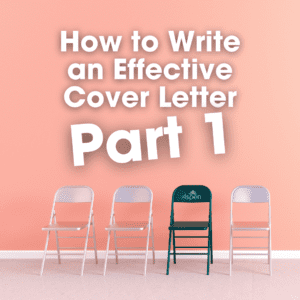POSTED Friday 30-09-22
How to Write an Effective Cover Letter – Part 3
Hello, and thank you again for joining me on this 3 part blog series. Last time on How to Write an Effective Cover Letter – Part 2, we looked at the main body of your cover letter. Highlighting your achievements and aligning them with the organisation you are applying to. And, of course, not referring to yourself in the third person. Only The Rock from World Wrestling Entertainment can pull that one off.
Our hints and tips will help prepare you for that important application for the new trustee position you have been eyeing. Or any of our other fantastic roles on our website.
Hello, and thank you for joining me for the third and final part of the how-to-write an effective cover letter blog mini-series. Last time we looked at the main body of your cover letter. We were looking at demonstrating a solid alignment between the organisational goals and your skills and achievements. We also looked at not using overly technical language.
Our hints and tips will help prepare you for that important application for the new trustee position you have been eyeing. Or any of our other fantastic roles on our website.
Bring it all together with a Conclusion
A solid conclusion is fundamental as this is the final impression you leave the organisation of you. Don’t worry, however. After you apply everything that is in part 1 and part 2, this will be the shortest and most straightforward section to write on your cover letter. In one or two sentences, you want to reiterate your interest, close off by thanking your reader for their time, and consideration in taking you on, and sign off with your name at the bottom.
If you can paste in a no-background version of your signature or an authentic-looking “handwritten” font for a signature is a nice touch.
The only way to go wrong here is by waffling and writing too much. Keep it short, sweet and snappy, as you’ve already written down all the essential aspects of the cover letter in the previous sections.
Lastly, some general pointers:
Be sure to format your cover letter consistently, using one consistent font (including the same size and colour throughout) and always use single or double spacing. Use a spellchecker or Grammarly. Or have someone proofread your cover letter for any typos or grammatical errors. We all have a friend or connection with a keen eye for this.
It sounds obvious, but not everyone does this, and it can come across as haphazard and unpolished. By having a consistent format throughout, you’ve shown that you’ve put effort and effort into curating your letter. You want to leave a good impression, and this is a straightforward way to do that.
Unless stated on the job description to have a longer cover letter due to the role being in a specific industry such as academia, keep your cover letter to 1-2 pages. Generally, this is a sign that you’ve been able to be concise and specific. Doing this will hold the reader’s attention.
And there you have it. Finally, after a 3 part blog, you have an effective structure and strategy for writing a cover letter that will position you better for future job applications. If you follow this advice, the result will be a tailored, engaging, collaboration-focused, and personable letter that will grab the reader’s attention. Of course, it’s not always easy to talk about yourself and your role in a company, but hopefully, this guide will help you through the process.
Best of luck!
Valuable tools that some of our team use to create excellent CVs and Cover Letters are:
- Grammarly
- Canva
- MS Word
- Wordtune
Thank you for taking the time with me this month to read my my 3 part blog series.
David Currie
Consultant




